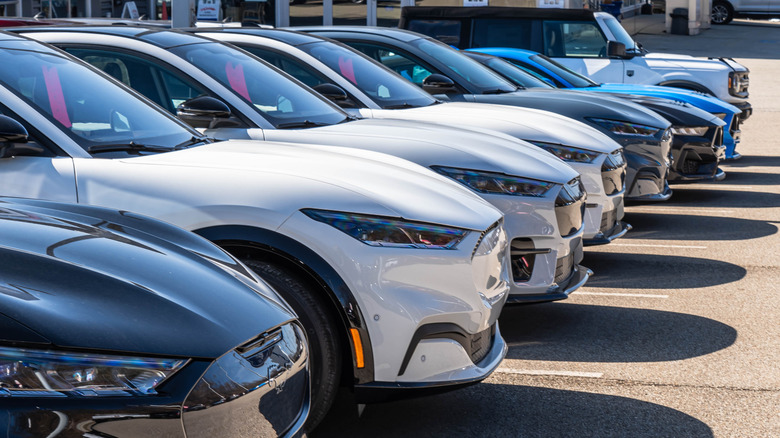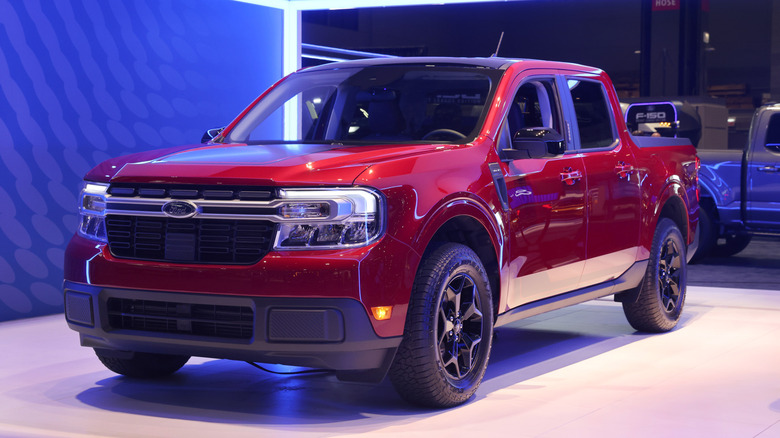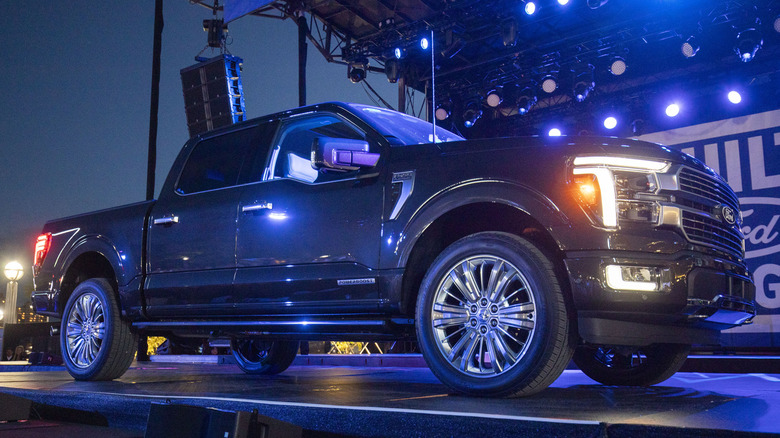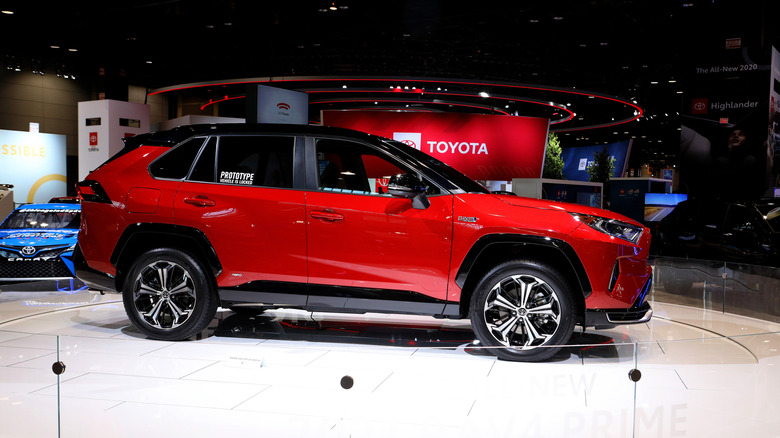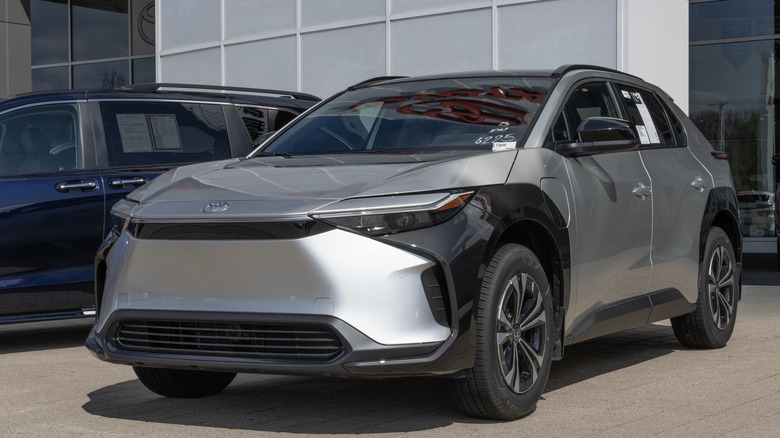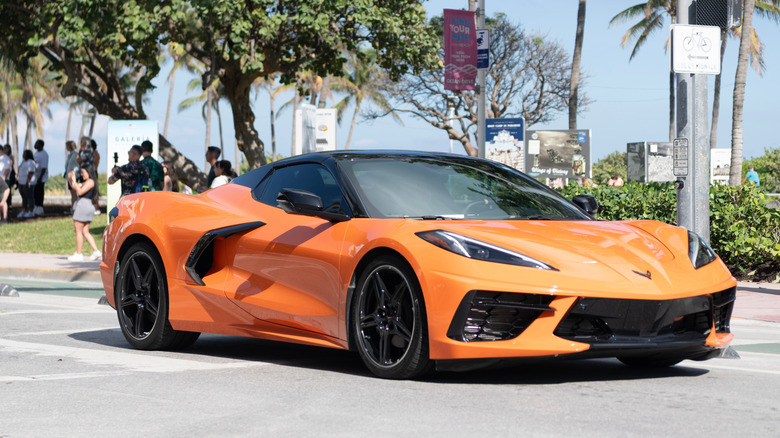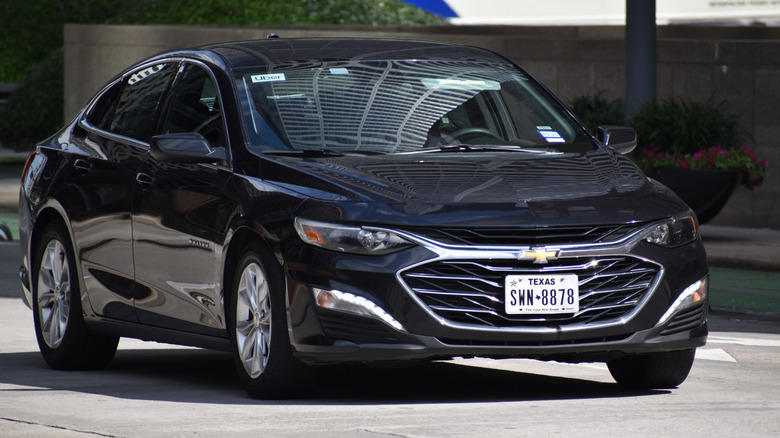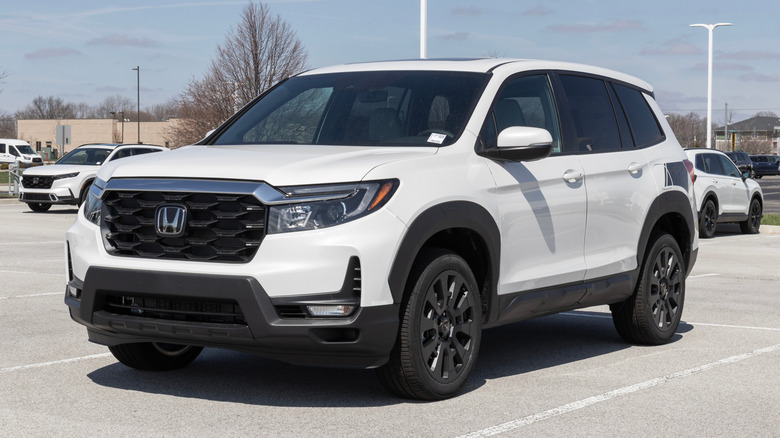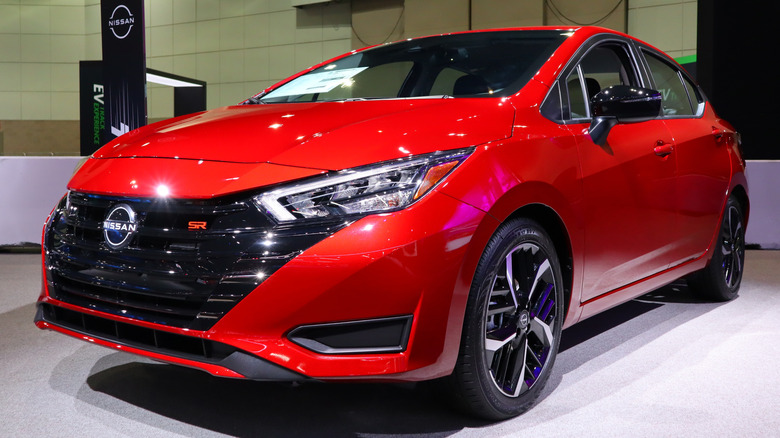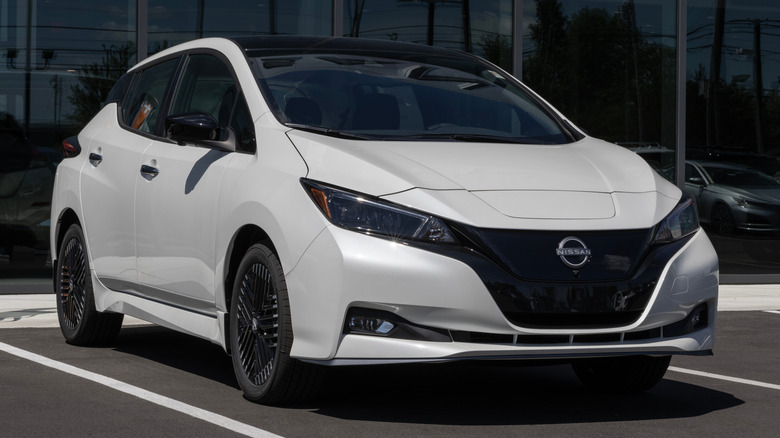The Best And Worst Cars Made By Major Automakers
As an automotive journalist with dozens of reviews under my belt, I have seen it all. From driving Corvettes right off the assembly line and onto the race track to going behind the scenes with startup automotive companies trying to break the mold of the industry, I have seen my fair share of the automotive world. From the top to the bottom of the automotive industry, every automaker brings something unique to the table. From GMC's truck-centric offerings to Tesla's EV-only lineup, every automaker has its niche in the market, and every automaker offers a variety of excellent vehicles.
However, not every vehicle produced by the major automakers is a winner. While major automakers are responsible for some of the best vehicles in the world, they are also guilty of producing some of the worst vehicles found on dealer lots today. Here is a glimpse into the best and worst vehicles currently being produced by the top automakers selling vehicles in the U.S.
Ford's best — Ford Maverick
Ford is the best-selling brand in America right now, and the Ford Maverick is a big reason why. The Maverick is truly a fantastic vehicle, achieving what every single American truck lover has wanted for years now — a compact, fuel-efficient pickup that is easy on the wallet. The last time the American public had a compact pickup truck that met this criteria was in 2011 with the previous generation Ford Ranger. Now, in 2025, the Ford Maverick is a hybrid-optional four door pickup truck that is everything anyone needs out of a pickup.
Currently, the new redesigned Ford Maverick has a base price tag of $26,995 MSRP and can be had with a 2.0L four-cylinder, turbocharged EcoBoost engine producing a respectable 250 horsepower and 275 ft-lb of torque. This powerplant is a tried and true engine that Ford installs into multiple vehicles in their lineup, and it is good for 26 mpg combined fuel economy. Ford also offers a hybrid 2.5L four-cylinder engine producing 191 horsepower and 155 lb-ft of torque.
The Ford Maverick with the 2.5L hybrid engine is the way to go. With its unbelievable 42 mpg city and 35 mpg highway fuel economy ratings, it is a truck that pushes fuel economy to the limit. The Ford Maverick is affordable, well-built, and sips gas. It truly doesn't get better than the Maverick.
Ford's worst — Ford F-150 Hybrid
Yes, the Ford F-150 is a staple of not only the American automotive culture but the worldwide automotive landscape. The Ford F-150 has shaped the world, found equally on work sites and city streets, getting families to their destinations for decades now. However, the Ford F-150 Hybrid is currently one of the worst vehicles you can buy today in terms of reliability. American trucks have been ironically lacking in the dependability department. Year after year, trucks are produced flexing their capability, while being outclassed in reliability by simple economy cars.
The F-150 Hybrid takes that lack of reliability to the next level, with some common problems that can happen during ownership. When it comes to subpar reliability, Consumer Reports even added the F-150 hybrid — and its EV sibling the F-150 Lightning — to its most recent list of the 10 least reliable cars. This lack of reliability, combined with the disappointing fuel economy ratings of 22 mpg city and 24 mpg highway, and an MSRP of over $70,000 on higher-end trim levels, makes it hard to believe that anyone would buy an F-150 Hybrid.
Toyota's best — Toyota RAV4 Prime
The Toyota RAV4 SUV is the best-selling vehicle in America. No, that is not hyperbole. According to Forbes, the RAV4 outsold the Ford F-150 and became the best-selling vehicle in America for 2024. Vehicles don't sell this well for no reason, the RAV4 is truly everything most Americans want out of a vehicle. It is compact, easy to park, intuitive to drive, comfortable, and highly reliable. The RAV4 is a perfect look into the current American automotive culture.
The Toyota RAV4 Prime is the best version of the top-selling RAV4. The RAV4 Prime is a plug-in hybrid electric vehicle, or a PHEV for short. PHEVs combine the attributes of a full electric vehicle and a standard hybrid vehicle to offer the best of both worlds — an EV that doesn't need charging to operate, and a gas vehicle that can drive on full-electric power.
The RAV4 Prime is capable of traveling around 42 miles on electric power only. Many Americans have a daily commute that fits within this 42-mile range, so many consumers can drive their RAV4 every day without using a drop of gas, as long as they keep their battery charged.
Toyota's worst — Toyota bZ4X
To put it simply, the bZ4X is just not a very good EV. Toyota has been a trailblazer when it comes to alternative power sources in vehicles. After all, the original Prius brought the hybrid powertrain to the mainstream. Later, the Toyota Mirai brought hydrogen-powered vehicles to the masses. Today, the advancement of plug-in hybrid technology that Toyota helped develop was instrumental in creating a whole class of affordable fuel-sipping vehicles.
However, Toyota never fully made the jump into the EV marketplace. They experimented for a short time with limited market vehicles like the RAV4 EV for the California market, but they never dared to jump in with a mass-market EV. That is, until the bZ4X was released.
The bZ4X stands for beyond zero, with the number 4 equating its size to the RAV4, and the X standing for crossover. Not only is the name confusing and entirely different from the rest of the Toyota portfolio, but the quality just isn't very good. Jalopnik reported that the bZ4X has a subpar range, anemic charging capabilities, and a price that doesn't make up for its shortcomings, and our tester of the 2023 bZ4X was "just fine" at best. Hopefully, Toyota can right the ship as the bZ4X continues to develop.
Chevrolet's best — Chevrolet Corvette
The Chevrolet Corvette is widely considered to be America's sports car. Every year since 1953, the Corvette has been a staple of the American automotive culture. Not only is the Corvette historically quick in a straight line, but this flagship Chevrolet vehicle stands as an ambassador for American performance on the world stage, going head to head with Ferrari and Lamborghini.
The newest generation of Corvette, the C8, is one of the best sports cars of all time. It brings mid-engined V8 power to the masses with world-leading performance, at a rock-bottom price. The C8 Corvette starts at $68,300 MSRP for the base model Stingray. That's right, for a price lower than a fully-loaded Ford F-150 Hybrid, you can get a sports car that goes head to head with Ferraris in performance.
The Corvette receives perfect scores from publications fairly regularly as well, with Car and Driver recently gifting the model with a perfect score. The Corvette isn't just a specialty sports car, it's a vehicle that would be just as worthy of this placement if it carried a price tag that was twice as expensive. It is simply a fantastic vehicle at any price.
Chevrolet's worst — Chevrolet Malibu
Going from the Chevrolet C8 Corvette to the Chevrolet Malibu is truly a case of automotive whiplash, and, shockingly, these two vehicles share a dealer lot across the country today. The Chevrolet Malibu is an extremely anemic vehicle that is only being produced because rental car companies need inventory. Save for a refresh, this current version of the Malibu has been produced since 2016, making this a vehicle that hasn't changed much after years and years of production. Many would argue that it has gotten worse over the years, with fewer options available today than when the Malibu debuted for the 2016 model year.
Back in the mid-2010s, the Malibu was a solid vehicle. It was a good alternative to the Toyota Camry that came in at a cheaper price, equipped with some high-quality options on the higher trim levels. The Malibu Premier, for example, offered a luxury interior that looked more like a Cadillac or Buick offering than a Chevrolet product. High-quality leather, large touchscreen infotainment controls, alongside heated and ventilated seats. It was a great vehicle for the time.
Now, however, that high-end Malibu is nowhere to be seen, replaced with cheap trim levels to get these vehicles out the doors and into rental car lots. The Malibu is overdue for a discontinuation.
Honda's best — Honda Odyssey
Say whatever you want, but the Honda Odyssey minivan is the best in the business. One by one, the Honda Odyssey's competition has bitten the dust. More recently, it has even outlived the Dodge Grand Caravan, which was the vehicle that started the entire minivan segment. Not only has the Odyssey outlived nearly every other minivan in the marketplace, but the Odyssey has been holding strong in the Honda lineup since the 1995 model year.
Every trim level of the Honda Odyssey comes with the same tried-and-true V6 powerplant paired with a 10-speed automatic transmission. This configuration gives the Odyssey a solid amount of performance for a minivan, and good fuel economy, with an EPA estimated 28 mpg on the highway.
The top of the line Honda Odyssey Elite is filled to the brim with luxurious features that feel more at home in a limousine than a minivan, including an entertainment system that can stream content from your devices, an array of charging ports, a leather-filled interior, and a CabinWatch system, giving a live feed of the rear passengers for parents who want to keep an eye on their kids. The Honda Odyssey is a fantastic vehicle, even if minivans are not experiencing the same market share they once had.
Honda's worst — Honda Passport
Out of all the companies on this list, Honda has arguably the best lineup of vehicles across the board. There truly is no "bad car" in the Honda lineup. That being said, the Honda Passport is an odd vehicle that doesn't do a lot for the Honda brand as a whole. The Honda CR-V has made its mark on the automotive marketplace as the vehicle to reach for if you need a compact SUV. For consumers who need more space, the Honda Pilot was the go-to SUV for years. The Honda Passport is simply a smaller Honda Pilot.
So, with a vehicle lineup that is so solid, why even make the Passport? Why not just direct your consumers to the CR-V and the Pilot, which have both performed better in reviews than the Passport? The Honda Passport isn't a bad vehicle, it is simply a bland, stiff-riding, confusing, absolutely average addition to a Honda lineup that is much better without it.
Nissan's best — Nissan Versa
Nissan's market share has grown recently, and the Nissan Versa is a big part of that growth. Not because the Versa is as fast as a Chevrolet Corvette, or as versatile as a Ford Maverick. For this Nissan, it all comes down to price. Currently, the Versa is the cheapest vehicle in the US with a starting price of $17,190 MSRP. This alone makes the Versa a great value.
Just a few years ago, the only vehicles a consumer could buy for a sub-$20,000 price were the Chevy Spark and Mitsubishi Mirage, two vehicles of questionable build quality matching their extremely low prices. The Versa punches well above its price point, giving consumers a solidly built, fuel-efficient vehicle that is basic but gets the job done.
The Nissan Versa's shining attribute after its base MSRP is indeed its fuel economy ratings, which come in at 32 mpg city and 40 mpg highway. Remember, the Versa is a plain, 87-octane, gas engine vehicle with no hybrid engine. For the value found in the Versa, it is tough to pass up. It may not wow every driver behind the wheel, but it's hard to go wrong with a vehicle that is this cheap.
Nissan's worst — Nissan Leaf
The Nissan Leaf was a world-changing vehicle in 2011 when it was first unveiled to the world. After all, it was one of the first mass-market EVs to ever be produced. It is crazy to think just how innovative and inspiring Nissan was back in those days, bringing an EV with a range of just over 70 miles to an infrastructure that wasn't developed yet. For the time, it was fantastic, and truly brought electric vehicles to the mainstream.
However, that is when the Leaf stopped being exciting. Today, the Leaf is a dinosaur. For a vehicle that is seemingly cutting edge, it offers an antiquated battery cooling system, less than responsive touchscreen controls, and a rapid charging system called ChaDeMo, which is not as widely supported as other systems for rapid charging. The Leaf also only offers a range of around 150 miles on the base S model, which falls short of the competition.
Long story short, the Nissan Leaf just isn't what it used to be.
